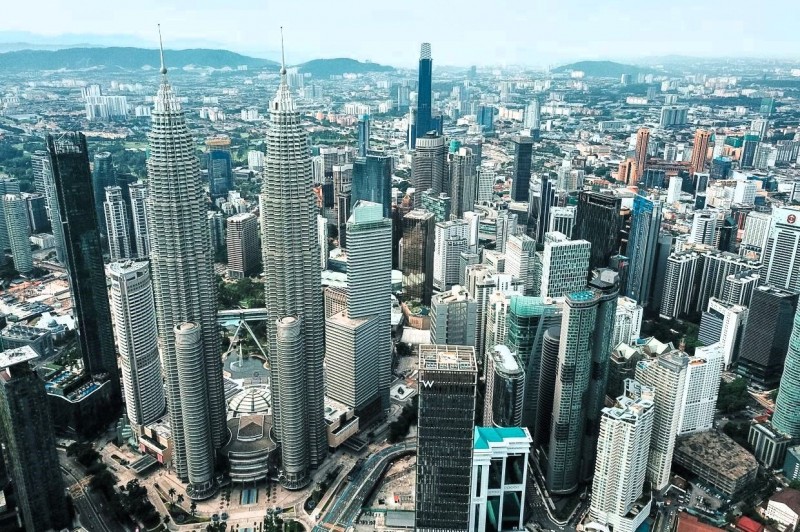
MALAYSIA'S disappointing Q4 growth numbers suggest that all is not well with the economy.
GDP growth of 3% was below expectations, largely because exports fell more than anticipated. For the whole of 2023, the figure was 3.7%, much lower than the 8.7% in 2022.
Such numbers come in the midst of the government’s plan to raise taxes in a bid to move away from petroleum, traditionally the country’s main source of revenue.
During Budget 2024, the first full-year budget since Datuk Seri Anwar Ibrahim became prime minister, tax increases were announced for taxes such as service tax, while high-value goods tax and capital gains tax in private entities were introduced.
To achieve a more sustainable tax base, the government intends to prioritise investment and consumption as the main pillars of economic growth.
The concern now is can these work after the numbers clearly show that it’s not full steam ahead for the economy?
Does the big plan need tweaking? Do taxes need to be perhaps cut, instead of increased, to stimulate growth?
Some economists reckon that increasing government spending is a more effective counter-cyclical measure to a slowing economy compared to cutting taxes.
There’s also the lever to cut interest rates in order to boost domestic demand given the available monetary policy space, others say.
Bank Negara Malaysia (BNM) maintained the Overnight Policy Rate (OPR) at 3% at its last meeting. Its latest increase was in May last year.
The OPR, the benchmark of bank interest rates, had been cut to its lowest in history in July 2020 after the Covid-19 pandemic put a huge dent on consumer spending and consumption. Consequently, the OPR was raised by a total of 125 basis points between May 2022 and May 2023.
Generally, economists believe that BNM’s fiscal position and monetary policy stance are stable, and this remains a good approach in supporting growth. Some say, however, this will not raise the 2024 GDP growth to the coveted 4% to 5% band.
As a result of the current environment, they say the government needs to simplify the tax structure with fresh reforms and fewer regulations, monopolies and government interference. It will free up businesses and attract investments.
The government should also accelerate subsidy rationalisation programmes and targeted income support which will support domestic consumption.
SMEs the likely casualty
In a slowing economy, small and medium enterprises (SMEs) are always the hardest hit.
They’ve been called the benchmark and more recently, the backbone of the economy, reaping the benefits when the country is doing well and suffering the most when the economy slows.
SMEs contribute to about 70% of the total workforce and 97% to the local business ecosystem.
The government has increased financial aid for SMEs in view of the current tough environment. These entities also have access to several financing programmes to keep them afloat.
CAKNA, for instance, aims to increase the access to funding for micro, small and medium-sized enterprises (MSMEs) and small contractors who have won government contracts and are looking for funding from lenders to boost their cash flow. Others like the RM1bil Business Recapitalisation Facility, the RM1bil Low Carbon Transition Facility and the Enhanced Features of the Disaster Relief Facility 2022 were introduced over the years to aid SMEs.
One industry observer says SME founders are normally entrepreneurs who have the mindset of doing it “all alone” without any government assistance. “They start off with this mindset but when they run into trouble, they are not sure where or who to turn to.”
This means that even with many of the current SME help programmes, many are clueless on how to get help and financing.
For SMEs to function well in the ecosystem and continue to play a key role in the economy, perhaps a more targeted approach such as SME educational programmes is needed.
BNM says growth in 2024 will be driven by resilient domestic expenditure and improved external demand.
It believes that domestically, household spending will continue to be supported by employment and wage growth.
Investment activity, it says, will be underpinned by further progress of multiyear projects, by both the private and public sectors, as well as the implementation of catalytic initiatives under the various national master plans.
Nevertheless, it warns that the growth outlook remains subject to downside risks stemming from weaker-than-expected external demand and larger declines in commodity production.
It remains to be seen how the government will handle all the economic challenges both here and globally to achieve growth while not burdening the rakyat.
Most economists agree that a review of the current strategy is probably necessary since growth has been lower than expected and some adjustments should be made.
Source: https://www.thestar.com.my/business/business-news/2024/02/28/tweaking-the-big-plan

